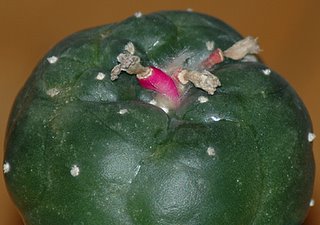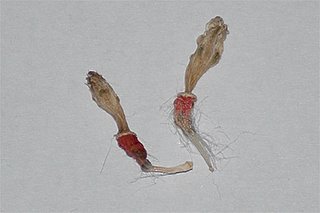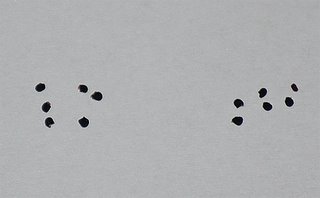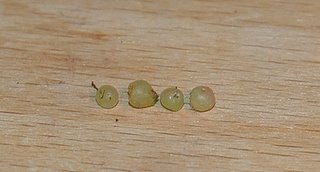Today I sowed this years first batch of seeds - 30 each of:
- Lophophora williamsii (VM 305k; Sierra de la Paila, Coahuila)
- Lophophora williamsii (VM 183k; Hipolito, Coahuila)
- Obregonia denegrii v. prerovskyana nom. prov. (KMR 38; Cinco de Mayo, Tamaulipas)
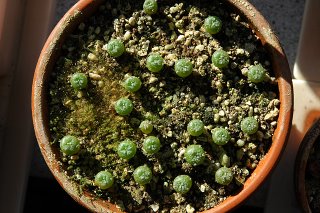 Lophophora williamsii seedlings (RS 428A; Cuatro Ciénegas, Coahuila)
It's amazing that cactus seedlings can thrive for a year in the humid environment of a sowing bag (notice the green stuff among the seedlings - it's moss!), but it seems to become them well.
Lophophora williamsii seedlings (RS 428A; Cuatro Ciénegas, Coahuila)
It's amazing that cactus seedlings can thrive for a year in the humid environment of a sowing bag (notice the green stuff among the seedlings - it's moss!), but it seems to become them well.
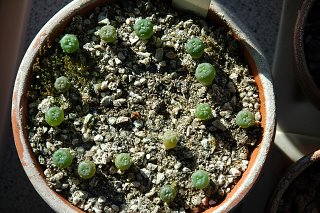 Lophophora diffusa seedlings (RS 1193; Peña Miller, Queretaro)
The benefits of growing in bags are many, e.g. you don't need to water often and most pests like red spider mites are avoided (on the other hand you have to be careful not to let in sciarid flies). On the downside, the plants seem slightly leggy - probably because they haven't been fully dormant throughout winter.
Lophophora diffusa seedlings (RS 1193; Peña Miller, Queretaro)
The benefits of growing in bags are many, e.g. you don't need to water often and most pests like red spider mites are avoided (on the other hand you have to be careful not to let in sciarid flies). On the downside, the plants seem slightly leggy - probably because they haven't been fully dormant throughout winter.
